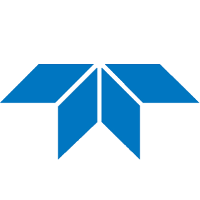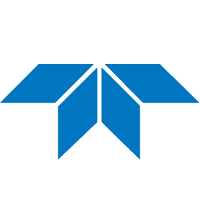
Teledyne Technologies Inc
NYSE:TDY


| US |

|
Johnson & Johnson
NYSE:JNJ
|
Pharmaceuticals
|
| US |

|
Berkshire Hathaway Inc
NYSE:BRK.A
|
Financial Services
|
| US |

|
Bank of America Corp
NYSE:BAC
|
Banking
|
| US |

|
Mastercard Inc
NYSE:MA
|
Technology
|
| US |

|
UnitedHealth Group Inc
NYSE:UNH
|
Health Care
|
| US |

|
Exxon Mobil Corp
NYSE:XOM
|
Energy
|
| US |

|
Pfizer Inc
NYSE:PFE
|
Pharmaceuticals
|
| US |

|
Palantir Technologies Inc
NYSE:PLTR
|
Technology
|
| US |

|
Nike Inc
NYSE:NKE
|
Textiles, Apparel & Luxury Goods
|
| US |

|
Visa Inc
NYSE:V
|
Technology
|
| CN |

|
Alibaba Group Holding Ltd
NYSE:BABA
|
Retail
|
| US |

|
3M Co
NYSE:MMM
|
Industrial Conglomerates
|
| US |

|
JPMorgan Chase & Co
NYSE:JPM
|
Banking
|
| US |

|
Coca-Cola Co
NYSE:KO
|
Beverages
|
| US |

|
Walmart Inc
NYSE:WMT
|
Retail
|
| US |

|
Verizon Communications Inc
NYSE:VZ
|
Telecommunication
|
Utilize notes to systematically review your investment decisions. By reflecting on past outcomes, you can discern effective strategies and identify those that underperformed. This continuous feedback loop enables you to adapt and refine your approach, optimizing for future success.
Each note serves as a learning point, offering insights into your decision-making processes. Over time, you'll accumulate a personalized database of knowledge, enhancing your ability to make informed decisions quickly and effectively.
With a comprehensive record of your investment history at your fingertips, you can compare current opportunities against past experiences. This not only bolsters your confidence but also ensures that each decision is grounded in a well-documented rationale.
Do you really want to delete this note?
This action cannot be undone.

| 52 Week Range |
362.5
489.24
|
| Price Target |
|
We'll email you a reminder when the closing price reaches USD.
Choose the stock you wish to monitor with a price alert.

|
Johnson & Johnson
NYSE:JNJ
|
US |

|
Berkshire Hathaway Inc
NYSE:BRK.A
|
US |

|
Bank of America Corp
NYSE:BAC
|
US |

|
Mastercard Inc
NYSE:MA
|
US |

|
UnitedHealth Group Inc
NYSE:UNH
|
US |

|
Exxon Mobil Corp
NYSE:XOM
|
US |

|
Pfizer Inc
NYSE:PFE
|
US |

|
Palantir Technologies Inc
NYSE:PLTR
|
US |

|
Nike Inc
NYSE:NKE
|
US |

|
Visa Inc
NYSE:V
|
US |

|
Alibaba Group Holding Ltd
NYSE:BABA
|
CN |

|
3M Co
NYSE:MMM
|
US |

|
JPMorgan Chase & Co
NYSE:JPM
|
US |

|
Coca-Cola Co
NYSE:KO
|
US |

|
Walmart Inc
NYSE:WMT
|
US |

|
Verizon Communications Inc
NYSE:VZ
|
US |
This alert will be permanently deleted.
 Teledyne Technologies Inc
Teledyne Technologies Inc
Teledyne Technologies Inc
Investor Relations
In the heart of technological innovation lies Teledyne Technologies Inc., a company that has masterfully stitched together a diverse portfolio of high-tech solutions. Originally birthed from the vision of entrepreneur Henry Singleton in 1960, Teledyne started as a small electronics company and has metamorphosed into a multifaceted engineering powerhouse. Today, it weaves through sectors such as aerospace, defense, and electronics, each thread contributing to the fabric of an organization known for its precision instrumentation, aerospace, and digital imaging technologies. This conglomerate framework has allowed Teledyne to exploit synergies between different industries, minimizing risk and ensuring robust, diversified revenue streams.
The heart of Teledyne's business model lies in its commitment to specialization within its core sectors, maximizing profitability through niche, high-value products. From advanced imaging sensors that capture data for scientific research and environmental monitoring to complex communication systems used by defense agencies, Teledyne’s products are critical to their clients' operations. By prioritizing research and development and tapping into markets with high barriers to entry, Teledyne not only maintains a competitive advantage but also secures long-term contracts and steady revenue. This approach exhibits a Warren Buffet-esque adherence to understanding and investing in what you know deeply, ensuring that every move is calculated with precision in a rapidly evolving technological landscape.

In the heart of technological innovation lies Teledyne Technologies Inc., a company that has masterfully stitched together a diverse portfolio of high-tech solutions. Originally birthed from the vision of entrepreneur Henry Singleton in 1960, Teledyne started as a small electronics company and has metamorphosed into a multifaceted engineering powerhouse. Today, it weaves through sectors such as aerospace, defense, and electronics, each thread contributing to the fabric of an organization known for its precision instrumentation, aerospace, and digital imaging technologies. This conglomerate framework has allowed Teledyne to exploit synergies between different industries, minimizing risk and ensuring robust, diversified revenue streams.
The heart of Teledyne's business model lies in its commitment to specialization within its core sectors, maximizing profitability through niche, high-value products. From advanced imaging sensors that capture data for scientific research and environmental monitoring to complex communication systems used by defense agencies, Teledyne’s products are critical to their clients' operations. By prioritizing research and development and tapping into markets with high barriers to entry, Teledyne not only maintains a competitive advantage but also secures long-term contracts and steady revenue. This approach exhibits a Warren Buffet-esque adherence to understanding and investing in what you know deeply, ensuring that every move is calculated with precision in a rapidly evolving technological landscape.





























 You don't have any saved screeners yet
You don't have any saved screeners yet
